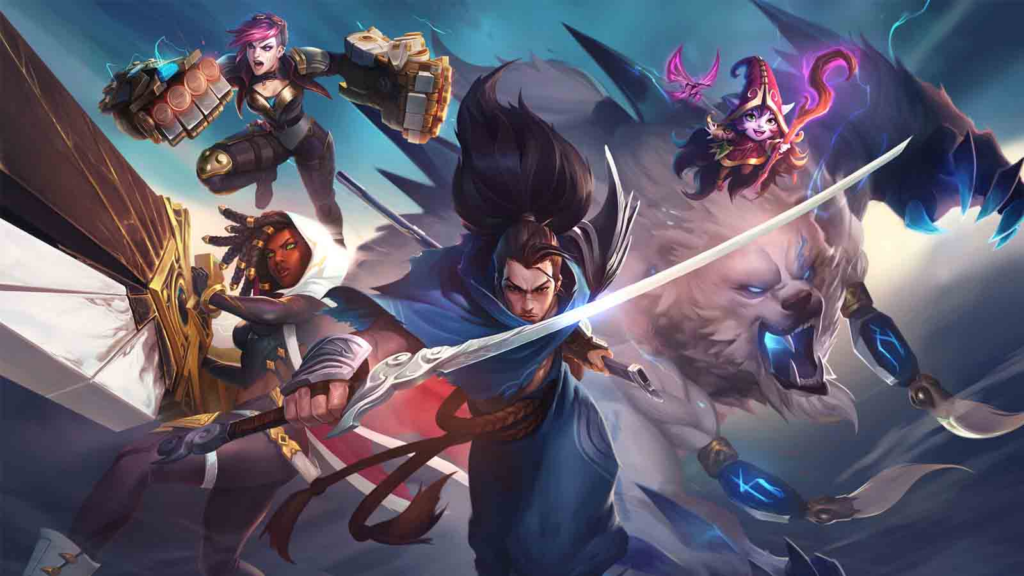In the rapidly evolving world of esports, particularly in the realm of League of Legends (LoL), the analysis of player performance has transcended beyond mere win-loss ratios. Today, comprehensive post-game evaluations incorporate a myriad of metrics, offering insights that help players refine strategies, improve skills, and understand their in-game roles more profoundly via LoL scores. This article delves into the essential metrics that are instrumental for post-game performance evaluation in League of Legends.
Table of Contents
ToggleKDA (Kills/Deaths/Assists) Ratio
The KDA ratio remains one of the most straightforward yet powerful indicators of individual performance in LoL. It combines the number of kills and assists a player secures and divides it by the number of deaths, offering a clear metric of their offensive effectiveness and survivability. A high KDA ratio typically indicates that a player not only actively participated in taking down opponents but also managed to avoid fatal engagements. This metric is particularly valuable for assessing players in carry roles, where maximizing damage while minimizing deaths is crucial.
CS (Creep Score)
Creep Score, or CS, measures the number of minions and neutral monsters a player has killed. This metric is crucial for understanding a player’s ability to farm resources effectively, which is a key aspect of building in-game strength. High CS numbers are often indicative of a player’s efficiency at laning and their ability to control minion waves—a fundamental skill in achieving strategic advantages and tower pressures.
Gold Earned and Gold Spend Efficiency
Gold metrics serve two primary functions: they reflect a player’s ability to contribute to the team’s economy and demonstrate their efficiency in using those resources. Evaluating how quickly and efficiently a player earns gold and subsequently spends it on impactful items can reveal much about their strategic understanding and timing.
Analysts often compare these metrics against average benchmarks to determine whether a player is performing above or below expectations.
Objective Control
Objective control includes metrics such as Dragon, Baron, Herald kills, and turret captures. These statistics are crucial for assessing a team’s control over the map and their ability to secure game-winning advantages. Players or teams that excel in securing these objectives often have higher chances of controlling the game’s pace and securing victories, making this a vital area for post-game analysis.
Vision Score
Vision score quantifies how well a player supports their team through vision and warding. This metric accounts for the placement and destruction of wards, revealing enemy movements and strategies. An excellent vision score is indicative of a player’s situational awareness and contribution to team safety and objective control. It’s particularly crucial for support roles, but increasingly, all roles are being evaluated on their ability to contribute to team vision.
Damage to Champions
This metric measures the total amount of damage a player deals to enemy champions. It provides insight into a player’s aggressiveness and effectiveness in skirmishes and team fights. Damage to champions is a critical metric for carries and damage-focused roles, helping to gauge their impact on the game’s offensive engagements.
Crowd Control Score
The crowd control score measures the effectiveness and frequency of a player’s use of abilities that limit the movements or actions of enemy champions. This metric is essential for roles that are heavy on crowd control, such as tanks and some supports. It reflects not only individual skill in executing game-changing plays but also the player’s tactical contributions to team fights.
Healing Done
For roles that are expected to provide healing, this metric is vital. It indicates the total amount of healing a player has contributed, which can be critical for maintaining the team’s sustainability in fights. It’s a crucial measure for support and certain top layers or junglers who might have healing abilities.
Damage Taken and Mitigation
This metric is especially important for tanks and front-line champions, measuring both the amount of damage they absorb for their team and how effectively they can mitigate this damage through defensive items or abilities.
High values might indicate a player’s proficiency at engaging and soaking damage, which is pivotal during team fights.
Conclusion
In the world of competitive League of Legends, post-game analysis is not just about determining who won or lost. It’s about understanding the hows and whys of each outcome. The metrics discussed provide a multi-dimensional view of player performance, each offering different insights into a player’s contributions to the game. As the esports industry continues to grow and the data available becomes even more granular, these evaluations will only become more sophisticated, helping players and teams achieve their peak performance levels.
For players, teams, and coaches dedicated to continual improvement, mastering the understanding and application of these metrics can be the difference between a good performance and a championship-winning one.







